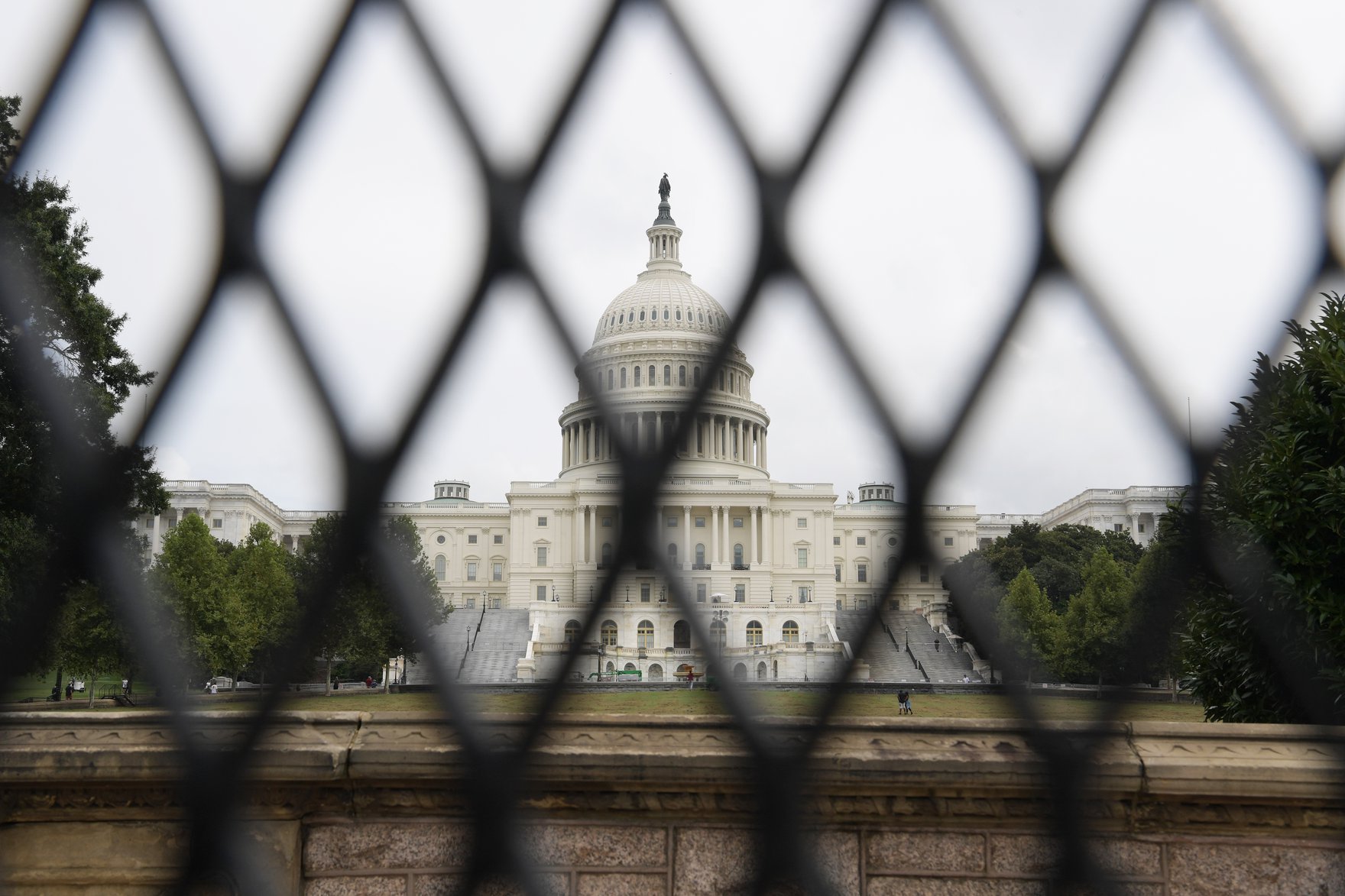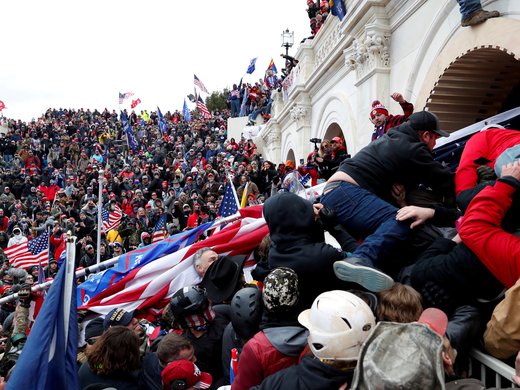In recent weeks, US media carried reports of a “Justice for January 6” rally – an event organized by elements of the far-right to support the hundreds of individuals arrested in the aftermath of the storming of the US Capitol Building earlier this year.
In this instance, however, history did not to repeat itself. Having been caught off-guard earlier this year (despite multiple reports of a mass gathering of extremists), the agencies responsible for protecting politicians, government workers and the buildings that house them prepared in advance.
Moreover, attention to the protest seems to have generated a level of paranoia within the far-right, with many reportedly believing it is a “deep-state” trap. This fear of surveillance has made it difficult to openly organize on social media platforms, and far-right extremists have encouraged individuals not to attend the events.
While many in Washington, DC, will be breathing a sigh of relief at a low turnout on September 17, the wider context remains grim. The failure of the “Justice for January 6” rally was due to a fear of arrest, and to surveillance within the far-right, not to a belief that the actions of January 6, or acts of political violence in general, are wrong. Indeed, the idea that physical intimidation and violence are acceptable ways of confronting political adversaries seems to be gaining ground in many places in the wake of the Capitol riot.
Of course, violence in Western democracies against politicians and political institutions is not new. Most nations have a history of fights between rival political movements, attacks on politicians and assassinations.
But the events of January 6 seem different in the current era. The ideologically motivated violent extremism (IMVE) resulting from the coming together of conspiracists and the grievance-driven seems particularly well placed to attack faith in democratic institutions, with the aim of delegitimizing them. Established narratives such as the “Great Replacement” and the “Great Reset” theories, with their anti-Semitic and Islamophobic origins, have combined with more tangible objections over lockdowns, vaccines and public health measures. The resulting “platform” for these movements is no longer about policy disagreements but about causes framed in stark terms of either freedom or worldwide tyranny. As individuals are constantly being fed the message that they are fighting for their literal lives, we should not be surprised if some are motivated to engage in violence, loosely organized or spontaneous.
Unfortunately, groups associated with these behaviours understand they may benefit from the attention they receive when and if they are associated with violent acts. Support for the anti-public health measures of the People’s Party of Canada (PPC) seems to have only increased after the media gave extensive coverage to an incident where a local PPC official threw gravel at the head of Canadian Prime Minister Justin Trudeau in September.
These events are now affecting the security posture of the institutions tasked with keeping our political institutions safe. While efforts have always been made to protect legislatures from terror attacks, espionage and criminal activities, officials are now asking themselves how they can protect buildings from mobs of angry marchers, armed with hockey sticks, bats, fire extinguishers and other improvised weapons, who believe that they have a right to storm a legislative chamber that they see as illegitimate and unable to bring change.
What are the implications of the development of these ideological movements, which have violent anti-political elements that are demanding to move from the fringe to the mainstream?
The most immediate impact is on the broader threat environment. These groups of disaffected individuals are being targeted by the far-right. For example, the “Groyper” movement active in the United States and Canada openly seeks to infiltrate political parties for the purpose of subverting them and mainstreaming far-right ideas.
However, monitoring the far-right and other ideologically violent extremist groups has proven to be a challenge for national security agencies, as evidenced by their failure to understand the implications of the open-source intelligence in the lead-up to the January 6 riot. Such activities become politically sensitive when these forces are interacting with (nominally) democratic institutions — such as political parties. Spy agencies in Western countries have been rightfully criticized for their monitoring or disruption of certain politicians and political groups in the past. They will be concerned about entering (or re-entering) this space if required to do so.
Moreover, the nature of the situation makes it difficult to tackle from an organizational standpoint. To what extent is the rise of anti-political movements with IMVE links a national security threat versus a public safety or police issue? Or is this kind of extremism instead a policy challenge for the kinds of government institutions responsible for promoting citizenship and values? And if so, should this challenge be dealt with at the national level, or at the provincial or municipal level? Or might it even require international coordination, as individuals in these groups share ideas and make plans across borders?
A longer-term issue will be protecting the nature of our democracies themselves. Participation in public life, and the ability for citizens to interact with the government that represents them, is fundamentally important. But how can agencies in charge of protecting democratic institutions strike a balance that preserves access to them while also mitigating the risk of spontaneous or loosely organized violence that is increasingly present? Moreover, this threat is moving beyond national capitals and to the offices and homes of representatives and other political figures — areas far removed from heavily surveilled and protected seats of government. This presents a new threat of smaller acts of localized violence, which will have a chilling effect on the openness of our democracy.
Western societies have met the challenge of political violence before – but never on the same scale, or channelled through as many diffuse networks, as is the case today. Moreover, it is not clear what will happen to extremist or violent groups once the pandemic and its associated restrictions have lifted. It is possible they may dissipate as people return to their everyday lives and become less interested in the less-tangible conspiratorial aspects of these movements. However, it is equally likely that far-right extremists will use their new-found connections to push other racist, xenophobic and sexist narratives in an attempt to mainstream their ideas, and champion politicians who share these views.
The trend in several Western countries, including in the just-completed Canadian election campaign, is not encouraging. Governments in democratic nations need to turn their attention to this now, giving careful thought to how they can use the tools at their disposal, before it becomes further entrenched.



